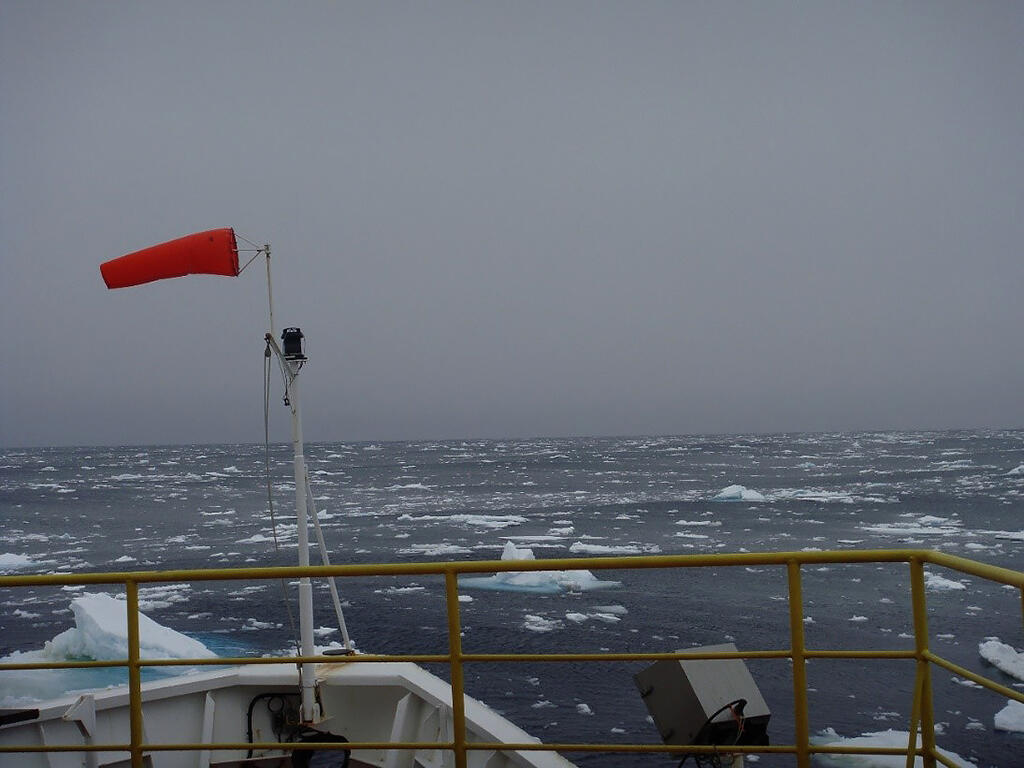The Atmosphere and Ocean Research Institute of the University of Tokyo and others have succeeded in improving the accuracy of predicting the impacts of global warming. Along with an international research team led by Professor Dunbar of Stanford University, the United States, a research group consisting of Professor Yusuke Yokoyama of the Atmosphere and Ocean Research Institute of the University of Tokyo, Masako Yamane of the Institute for Space-Earth Environmental Research, Nagoya University, and Dr. Johnson and Professor McKay of Victoria University of Wellington, New Zealand analyzed 170 m sediment deposits collected from the Adélie Coast, off the Wilkes Land region of East Antarctica, and succeeded in reconstructing detailed records for the past 10,000 years.

The research group analyzed a 170 m long record of sediment core from the Adélie Coast, located off the coast of Wilkes Land, East Antarctica. The studied sediment had a striped sedimentary structure called laminae. Owing to its fast deposition rate of 1.5-2 cm per year, the sample preserves past oceanographic records with the highest time resolution of any sediments ever obtained from the Antarctic Ocean. Detailed dating was performed using the high-precision radiocarbon (14C) dating method, and records of the sea area in the last 11400 years were reconstructed based on X-ray elemental composition analyses and studying organic compounds that preserve sea ice records.
The results showed that since the last glacial period, when the global climate was cold, the environment of the Antarctic Sea has changed, especially during the Holocene, which is the current interglacial period. In the early Holocene, planktonic growth (blooms) occurred annually, whereas in the middle Holocene, it became apparent that their frequency changed to 2-7 years.
This observation has been attributed to the expansion of the scale of sea ice overhang; it was found that the state of sea ice has a great effect on marine bio-productivity and plankton proliferation. Previous studies have reported changes in the intensity and frequency of El Nino southern oscillations, as well as low-latitude climates and teleconnections in the Antarctic Sea during the middle Holocene. Large-scale collapse of the ice of the Ross Ice Shelf, the largest Antarctic ice shelf, and the melting of ice sheets around the Lutzow-Holm Bay, where the Japanese Syowa Station is located, have also been reported. The results of these studies on Antarctic ice loss are consistent with the results of the researchers' study.
The results of this study will help improve the accuracy of the models predicting changes in the Antarctic Sea and global climate considering the future progression of warming. In particular, while sea ice is projected to shrink in the future, this is expected to help improve the precision of climate models in predicting the impacts on biogeochemical cycles, which also play an important role in the uptake of marine organisms and atmospheric carbon dioxide. Dr. Yamane mentioned that, "Several sediment cores have been excavated in this area during the last 10 years. In the future, we plan to use these samples to restore records from older times. Focusing on the time, I would like to evaluate the relationship between the Antarctic sea area and the global climate in warm environments, which is expected to contribute to the prediction of the impact of future warming."
This article has been translated by JST with permission from The Science News Ltd.(https://sci-news.co.jp/). Unauthorized reproduction of the article and photographs is prohibited.




